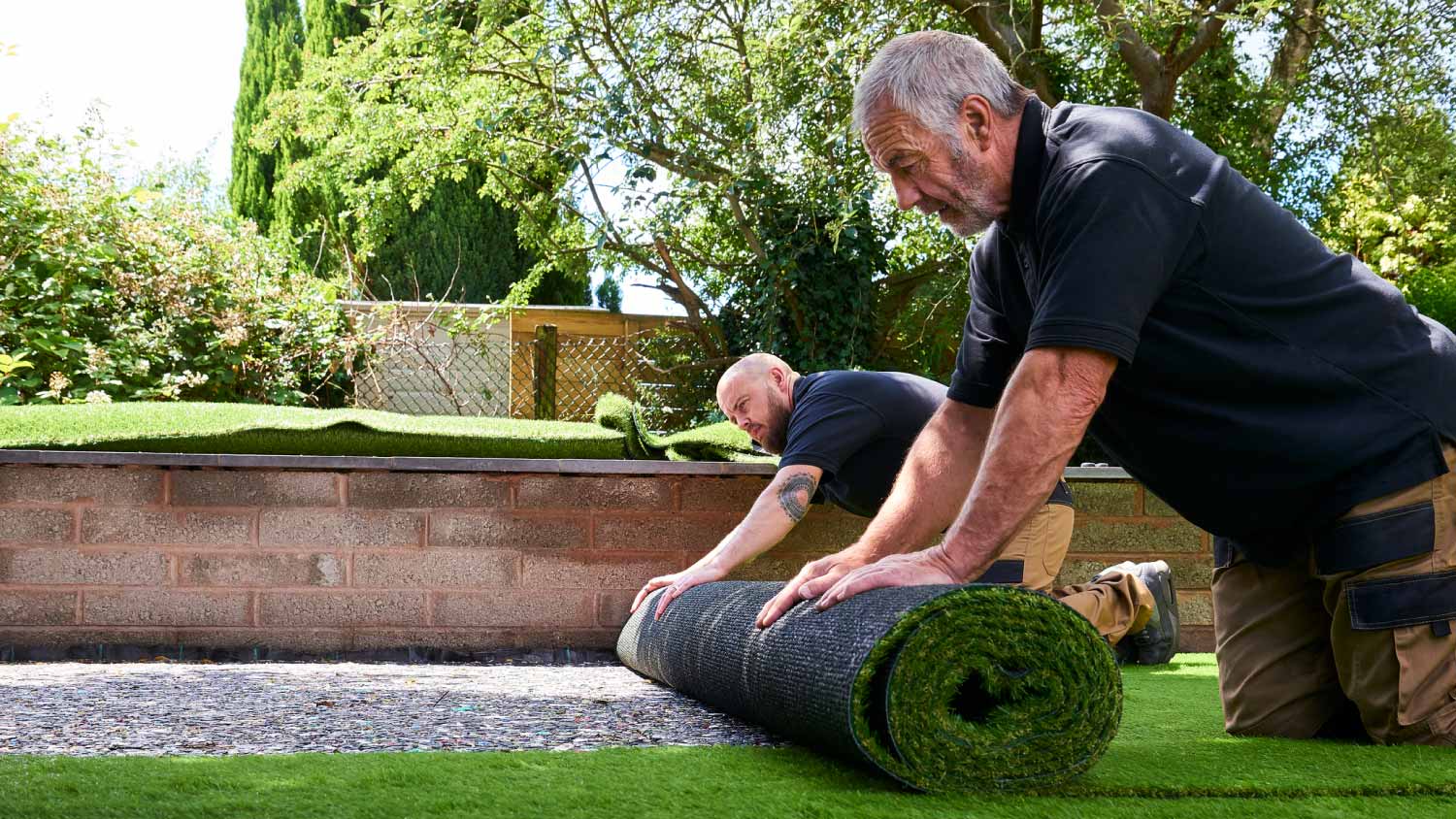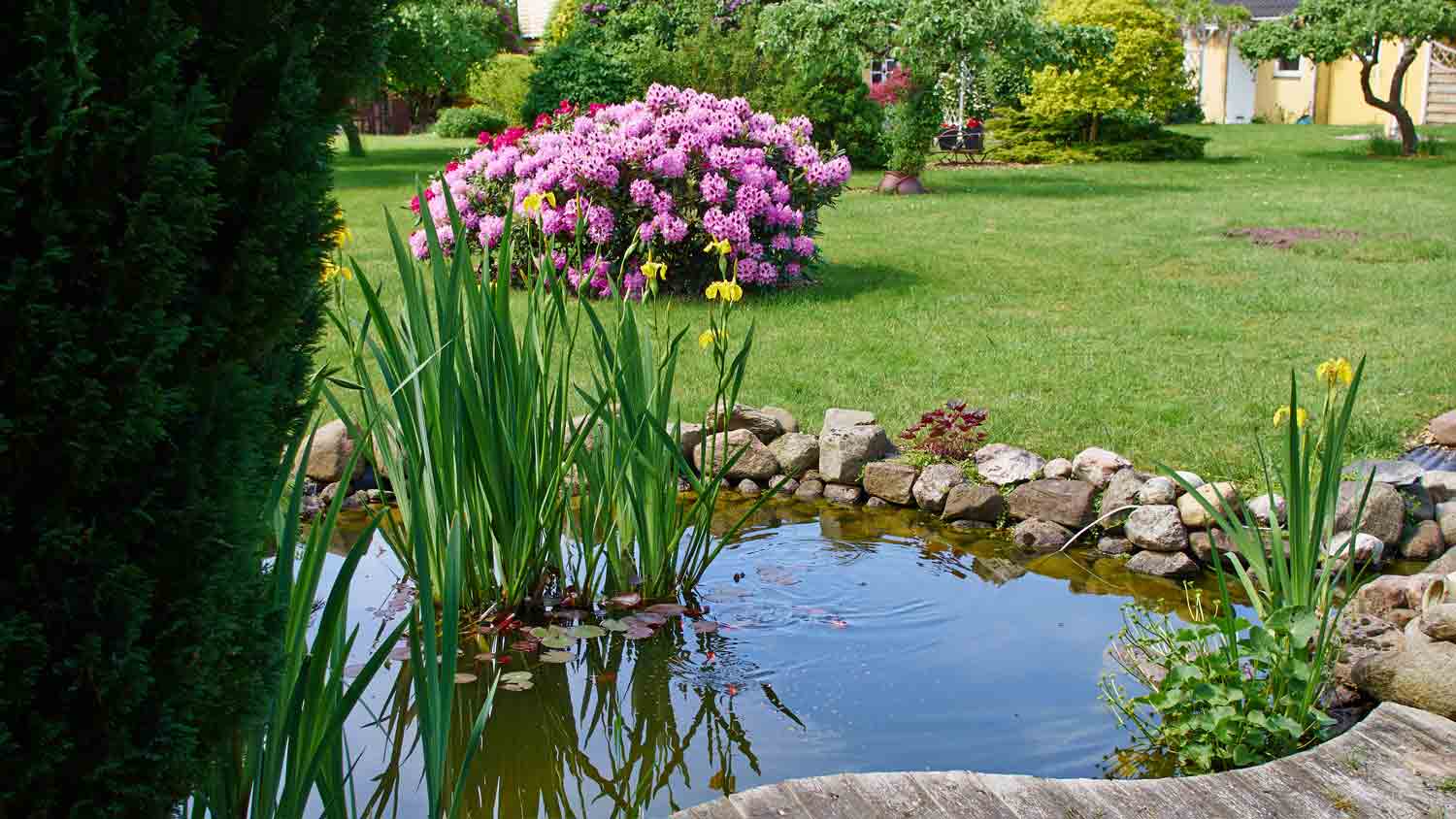
Railroad tie retaining wall costs can vary widely, so getting an accurate estimate for your needs is a good idea to set your budget appropriately.
The longevity of this grass alternative is the real deal


Keeping up with a turf lawn takes a lot of time, effort, and water. Artificial grass is a great alternative for your yard that requires minimal maintenance to always look bright, green, and lush. Learn how long artificial grass lasts, how to tell it’s time to replace it, and how to keep it looking great for years to come.
Modern artificial grass can last between 10 and 20 years when maintained properly. Factors that affect how long your artificial grass lasts include the quality of material used, how it was installed, weather conditions, how much traffic it gets, and how it’s maintained.
One of the key benefits of choosing artificial grass is that it can last a decade or more without mowing, watering, or frequent upkeep—but there are some things that affect how long it’ll remain green and lush.
Not all artificial grass is created equal, and the quality of your grass will influence its longevity. Higher-end artificial grass is more durable and designed to hold up better to outdoor conditions compared to lower-quality alternatives, but it’s more expensive.
Improperly installed artificial turf may become uneven, is prone to flooding, and can lift, causing unnecessary wear and tear. Turf installed on correctly prepared ground and secured properly will last longer than incorrectly installed artificial grass.
Although artificial grass is designed to withstand weather conditions, extended or repeated periods of extreme weather can cause it to deteriorate faster. Extremely high temperatures, very wet conditions, and an extreme freeze/thaw cycle may mean you’ll probably have to replace your artificial grass sooner than you’d like.
Artificial grass that sees a lot of regular foot traffic or supports heavy furniture and fixtures won’t last as long as artificial grass that sees less use.
While artificial grass doesn’t need much maintenance, it does need to be periodically cleaned and raked to stay in good shape. Homeowners with artificial grass with dogs also need to be diligent about picking up pet waste to keep odors away and prevent premature deterioration.

After a decade or so, you may see signs that your artificial grass is nearing the end of its life span. Some things to look for include:
Splitting seams
Lifting edges
Faded color
Flattened or matted blades
Split fibers
Pooling water
With a little artificial grass maintenance, you can keep your turf looking new for up to two decades. Depending on the type of artificial grass you choose, the manufacturer may have specific recommendations for steps to take to increase your grass’s longevity. Some tips to keep your artificial grass in good condition include:
Rinse it regularly with a hose to remove debris, pollen, and dirt.
Promptly remove pet waste.
Brush or rake the turf to keep the blades upright.
Keep reflective materials from focusing light onto the grass.
Regularly remove stains.
Inspect seams and edges for lifting.
Make sure to plan your landscaping design before you break ground. Knowing which materials you need, what services you have to hire, and how much your budget is can save you money throughout your landscaping project.
If you have problems with your artificial grass before the expected end of its life, you may be covered under a manufacturer or installer warranty. Before installing artificial grass, find out if the material has a warranty, what the warranty covers, how long the coverage lasts, and what’s required to make a claim. A local artificial grass installer may also offer a warranty on installation work, so verify any potential coverage when deciding who to hire.
In some cases, artificial grass that’s nearing the end of its life span may be able to last longer with repairs rather than full replacement. If you catch lifting seams or edges early enough, they can be fixed before more damage occurs, and damaged sections of turf can be replaced so you don’t have to replace the entire area.
From average costs to expert advice, get all the answers you need to get your job done.

Railroad tie retaining wall costs can vary widely, so getting an accurate estimate for your needs is a good idea to set your budget appropriately.

From your flower beds to your walkway, river rocks make a classic addition to your landscape. Learn about the cost to install river rock to set a proper budget.

Leveling your yard can help with drainage and prevent damage to your home. Learn the cost to level a yard in Columbus, OH, and what factors can affect the price.

When building a pond, you’ll have to choose a pond liner, which come in various materials and sizes. So, what size pond liner do you need? Let’s break it down.

Want a healthy, green lawn fast? Learn how to lay sod in just one day so that its grass grows into a robust lawn you’ll enjoy for many seasons to come.

Digging up a bush can be difficult, and trimming it down won’t prevent it from coming back. So, what kills bushes instantly? Find out more.